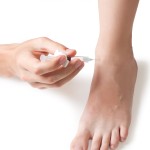Patient Information
Platelet rich plasma injections / treatment involves the collection of your blood (approximately 8 ml) which is then spun down using a centrifuge to separate out the plasma and platelet portion using the ‘separator gel’ as a special filter. The PRP portion of your blood is then injected back into the injury. The product injected is 100% your own blood by-product (autologous).
If you have any questions please do not hesitate to ask your physician.
BEFORE THE INJECTION
If you have any type of blood disorder please inform the doctor undertaking the procedure. In particular, if you have anaemia, low platelet count, or recent illness let your doctor know. You should not take aspirin if you are having PRP. Ask us about this.
You should not have PRP treatment done if you have any of the following conditions:
systemic cancer, chemotherapy, steroid therapy, blood disorders and platelet abnormalities, anticoagulation therapy (i.e.: Warfarin). If you are unsure about any of above mentioned conditions, please ask.
You should avoid anti-inflammatories and aspirin from one week prior until three weeks after the injection
AFTER THE INJECTION
- You may have a temporary increase in symptoms that can be managed by ice, rest, and paraceetamol.
- You should rest the tendon or joint for several days followed by gradual activity.
- You should see a physiotherapist regarding an isometric strengthening program for the affected part starting 10-14days after the last injection
- A second injection is usually recommended at 2-3 weeks. The response is best assessed at the 4-6 week interval. If there is no response then further injections are unlikely to be helpful.

Dr Duncan uses a Regenlab system for extracting the PRP from your blood. More information can be found at http://www.regenlab.com/.
POSSIBLE SIDE EFFECTS
You may experience mild to moderate swelling of the treated area, this will last for about 8-24hrs. You may notice a tingling sensation while the cells are being activated. In very rare cases skin infection may occur, which may require treatment with an antibiotic.
